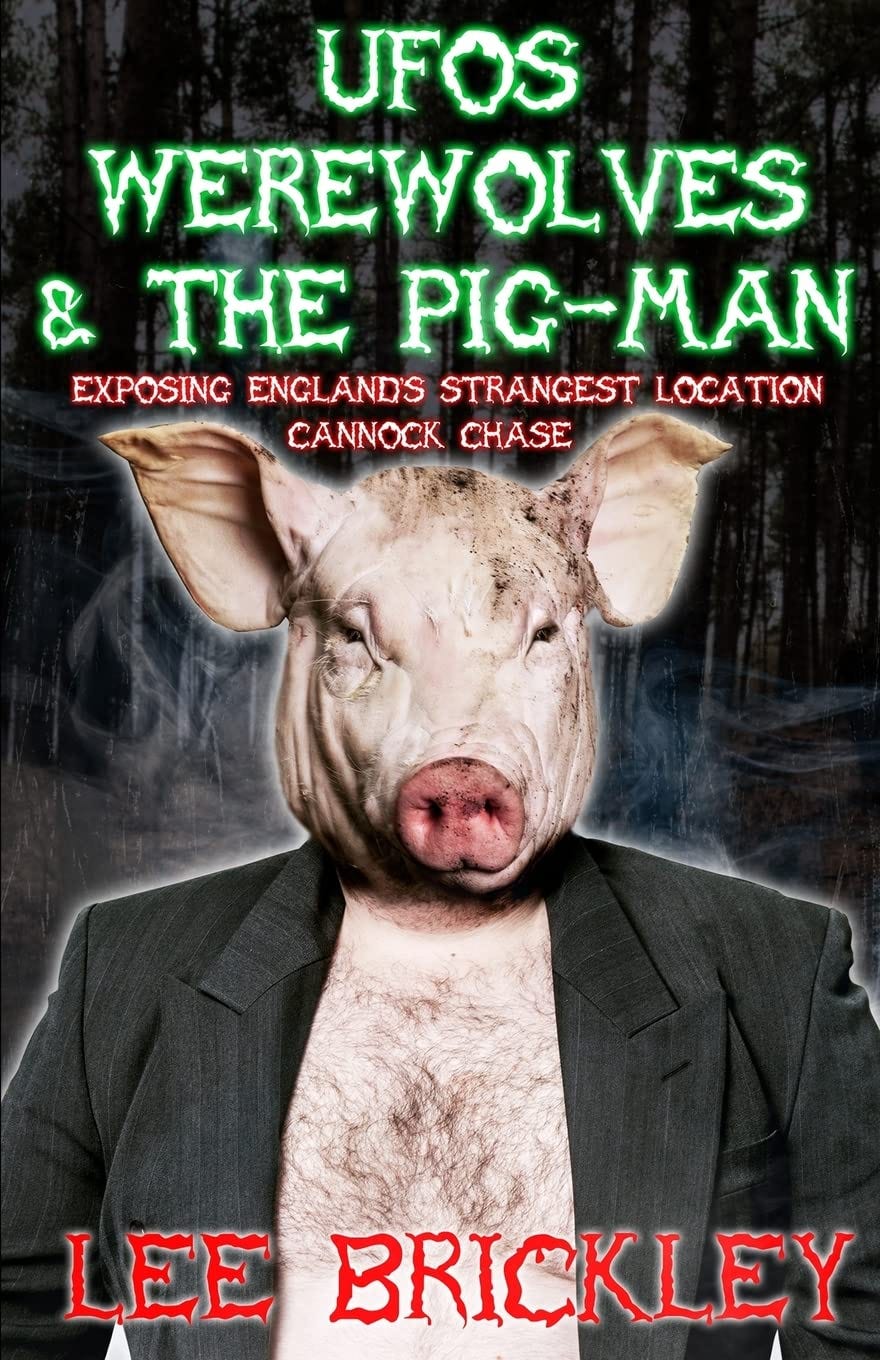There’s no doubting the passion Lee Brickley has for the paranormal legacy of Cannock Chase. That much comes through very clearly in UFOs, Werewolves & The Pig-Man – Exposing England’s Strangest Location, Cannock Chase. The question, for me, is what that passion costs the book in terms of balance and critical thinking.
Cannock Chase, in Staffordshire, is a place many paranormal enthusiasts will recognise. I’ve been interested in it since I was a teenager, particularly the modern werewolf reports, so I was genuinely excited to see a whole book dedicated to its mysteries. Brickley starts with some of the area’s stranger historical highlights and then breaks the phenomena into themed chapters: alien encounters, wild beasts, the Pig-Man legend, ghostly goings-on, and alleged secret military activity.
On paper, that structure has a lot of potential. In practice, my initial excitement faded pretty quickly. The main issue is that the narrative is often let down by biased framing and some fairly dramatic leaps of logic.
From early on, Brickley suggests that the oddities of Cannock Chase might be due to an inter-dimensional portal, and that a series of animal mutilations with no identified culprit could be the work of alien visitors. These are presented as possibilities rather than throwaway speculation, but there isn’t much in the way of robust argument to support them – it reads more like enthusiastic conjecture than considered analysis.
There are similar issues elsewhere. Rather than asking whether werewolves are likely to exist at all, for instance, Brickley focuses on whether they might manifest in daylight. He also places heavy weight on eyewitness testimony, at one point pointing out that people claiming monster encounters have passed polygraph tests, as though that settles the question. It doesn’t. Polygraphs are notoriously unreliable, and even honest witnesses can be completely mistaken about what they saw.
It’s clear that Brickley really wants Cannock Chase to be home to paranormal entities. That comes through in his trust of witness accounts and in moments like his attempt to communicate with a phantom via Ouija board. I understand the instinct – as a paranormal researcher myself, I know how easy it is to empathise with people who report strange experiences. But empathy doesn’t turn an anecdote into solid evidence, and memory is far more fallible than many people realise.
That said, there are positives here. The accounts collected in the book are genuinely interesting, and some of the reported experiences are properly unsettling. Even with my sceptical hat on, I found myself creeped out at times. If you’re already fascinated by the weirder side of Cannock Chase, this is a fun, fast read that gathers a lot of stories in one place.
Where it falls short, in my view, is as a piece of critical paranormal writing. The book often feels as though it’s trying hard to convince you that Cannock Chase must be special and that the strangest explanations are the most plausible. I actually think the area is worthy of attention anyway – its folklore, reported phenomena and history are rich enough without portals and aliens being pushed to the front.
In the end, UFOs, Werewolves & The Pig-Man made me want to visit Cannock Chase and dig deeper, but it also left me wishing for a more structured, critically engaged take on the same material. I’d be interested to see Brickley tackle future work with a tighter narrative and a bit more methodological caution.
Enjoy this? You can get more articles via my newsletter, The Ghost Geek, or support my work with a one-off tip on Buy Me a Coffee. Purchases made via links in this review may earn me a small commission through Amazon Affiliates at no extra cost to you.



